
Publication series
Publication series
When initiating a new series, we coordinate the layout with the editors so that individual design requests can be considered at any time. Once this process is complete, the series layout is ready for publication of the individual titles, and the titles of each author can be published in a unified format.
Each new series is registered with the National ISSN Center and assigned an ISSN (International Standard Serial Number). This number serves as a short, unique identification for continuously published publications and is a tool for efficient document delivery. The ISSN is very helpful for title research because it allows for unique, global identification of series.
We collaborate with a variety of renowned academic research institutions and publishers. We currently manage over 500 institutional series, each publishing the latest research findings.
You can find an overview of this here.
Additionally, we offer you, as an author or editor, the opportunity to publish series electronically, independent of the book or CD/DVD format. Your publication will receive a DOI number, making the online publication clearly identifiable and easy to find.
This form of publication allows you to permanently publish series, conference and congress proceedings, etc., on a fixed internet address.
Our offering provides quick and easy publication of your series. It guarantees sustainable distribution of your documents and ensures their citability through long-term archiving.
Here you can find out more about online publication and distribution options.
Our publishing concept, based on state-of-the-art technology, enables us to produce books cost-effectively and guarantee long-term availability. The increasing specialization in all areas of science requires publishing for small groups of readers (special interests) and updating content at ever shorter intervals. Our publishing concept is geared and optimized to this end. We offer and enable our authors and editors:
- Fast decision-making processes regarding the inclusion of a title
- Very short production times and rapid publication
- Long-term availability of books
- International advertising and distribution
- Electronic publication of content
- Cost-effective copies for authors
- Various formats and book covers
The publications in a series appear in a uniform layout. This may also include the logo of the institute or research facility.
When initiating a series, our graphics department assists editors in creating a customized layout.
This can sometimes result in multi-colored and complex designs that would be uneconomical for a single publication.
In the case of a publication series, this layout work is carried out in advance when the series is initiated, and the authors who subsequently publish will then have a defined and appealing layout.
Each publication series is maintained under its own ISSN at the national ISSN center, making it internationally searchable and available to libraries and readers via subscription.
We also offer open access publication. Further information is available upon request.
To produce the book, we require a print-ready, typesetting-ready PDF file. If the author needs assistance with the manuscript, we are also your contact for typesetting and layout. If necessary, we can also provide freelance proofreaders, editors, or graphic designers.
Authors of theses and habilitation theses benefit significantly from publishing with a publisher. The final format of the book can be either DIN A5, DIN A4, B5 (17 x 24 cm), or another format; the formatting information in the instructions for creating the file templates must be adjusted accordingly.
Page 1 of the author's title page contains the information on the thesis or habilitation thesis. Page 2 contains information about the examination date or remains blank.
Page Margins
When creating your file, the page margins should be at least 2.0 cm for A4 and at least 1.4 cm for A5. This information applies to a total page count of up to approximately 200 pages. Please allow for larger page margins as the page count increases. The "Gutter" option does not need to be activated. When setting up headers and footers, we recommend a margin of 1.5 cm from the page edge.
Font Size and Line Spacing
We recommend a 13pt font with 1.3x line spacing for the text and a 12pt font for annotations, quotations, footnotes, etc. This information applies to the text at 100% A4 size. However, at least a 12pt font with 1.5x line spacing must be used for the text and a 10pt font for footnotes. The font size in tables and images should not be less than 6 points (approx. 2 mm).
Font Type
The author can generally determine the font type themselves. For longer texts, serif fonts such as Times or Palatino are best suited. For texts with illustrations or formulas, sans-serif fonts such as Arial or Verdana can also be used.
Page Order
New sections of the work (foreword, acknowledgements, table of contents, introduction, appendix, index, etc.) should begin on a right-hand (odd-numbered) page. Please note that according to most university guidelines, for theses and habilitation theses, the first page of the book or the first page with the back cover must contain the required information (examination date, reviewer, etc.). This is followed by the inside page prepared by the publisher and the imprint. As a rule, the required copies must include a CV at the end.
Positioning Page Numbers
We recommend positioning page numbers on the outside. This means that even numbers must be placed on the left and odd numbers on the right. (In Word, this can be found under: File/Insert/Page Numbers ("outside" option)). Another option is to place the page numbers in the center at the bottom. Page numbers are usually integrated into the header or footer.
Page Numbering
We recommend not numbering the title page or the introduction, and using Roman numerals for the table of contents and, if applicable, a list of figures up to the beginning of the main text. Arabic numbering then begins on the first page of the main text.
Images
When scanning color or grayscale images, you should select a resolution of at least 300 dpi (optimally 600 dpi). Pure black and white images, i.e., line graphics, should be scanned at 1,200 dpi. All image files used must not be smaller than the format intended for printing, as subsequent enlargement will significantly impair print quality.
Line Width
Avoid fine lines under 0.3 mm (0.9 pt), as these lines may break away when the text is reduced in size during printing.
State-of-the-art printing processes allow us to accept manuscripts as digital print templates. Compared to paper templates, digital manuscripts offer decisive advantages in terms of the quality of the finished book. Images and graphics, in particular, can be reproduced exceptionally well using digital templates.
Creating a PDF File
To create a PDF file, you need Acrobat Professional or a comparable free program such as FreePDF or PDFCreator.
If you are using Acrobat Professional, select Adobe PDF from the printer menu in your word processor to create the PDF file. The "Properties" option takes you to the next menu item. There, set the default setting to "Press Quality" or "High-Quality Printing." Under Adobe PDF Security, select "None." Set the paper size, regardless of the final format, to A4 and select 600 dpi for the "Print Quality" option. The scaling should be adjusted according to the final format:
- DIN A4 format = 100 %
- DIN A5 format = 70 %
- DIN B5 format = 80 %
Finally, select "Download as soft font" for the TrueType font option. You can leave all other settings as they are. Then confirm your settings with OK and specify the desired save location and file name. You will then receive a PDF file.
When using other PDF programs, please ensure that all fonts are embedded and that a high print quality is set.
Please note that we cannot make any changes or corrections to the PDF file. Therefore, please check the formatting again after generating the PDF file.
Formats and Scaling
The most popular format for our textbooks is DIN A5. This makes it necessary to reduce the page size, since manuscripts are usually created in DIN A4 format in word processors.

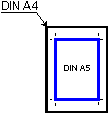
High-quality book design requires the use of first-class materials. We offer a variety of suitable high-quality papers, bindings, and formats for the individual realization of your work.
In book production, a basic distinction is made between paperback (softcover) editions with a flexible cardboard cover and books with a hardcover. Both binding types can be realized in several variations and with different binding methods.
Paperback (softcover)
Our 250 g offset board is printed in color with your layout and finished on one side with high-quality foil. Matte or glossy foils are available. In addition to the standard softcover, we also offer English brochures with side-folding covers.
The cover board and book block are usually bound with hot-melt adhesive. Alternatively, we also offer cold-glue binding and thread stitching. Books with a small page count are produced with staple stitching.
You can choose a standard layout or create your own design. Our graphics department will also be happy to assist you with creating a multi-colored cover with a custom design for a book with a flexible or hard cover.
Hardcover

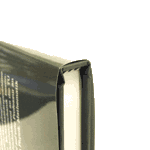

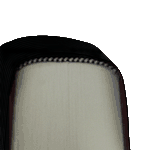
Paper Types
Four high-quality paper types in various weights are available for the book block.
Yellowish-white printing paper (80, 90, and 100 g/m²)
Is particularly recommended for books that contain predominantly text, especially fiction and nonfiction. It is characterized by higher volume and high opacity.
White quality paper (80 and 90 g/m²)
Is particularly suitable for non-fiction books with many illustrations, as well as for technical and textbooks.
Glossy coated art paper (90 and 120 g/m²)
Is coated, enabling brilliant reproduction of photos and images.
Matt coated art paper (90 and 115 g/m²)
Is also coated, providing reflection-free reproduction of photos and images.
Formats
- 11.5 x 18.5 cm
- 12.5 x 20.5 cm
- 14.8 x 21.0 cm (DIN A5)
- 16.0 x 23.0 cm
- 17.0 x 24.0 cm (B5)
- 17.6 x 25.0 cm (DIN B5)
- 20.5 x 20.5 cm
- 21.0 x 29.7 cm (DIN A4)
When typesetting your publication, our tasks include selecting professional typography and an attractive font and size. Adequate page margins and line alignment, guaranteed by the use of a baseline grid, complete the typesetting. We also check the quality of existing images and can optimize them if necessary. Correct page numbering and a well-structured table of contents are often unpleasant tasks when writing a manuscript – so we are happy to take on this task for you.
Standard layouts
The following layouts and color variants are available:
Layout I
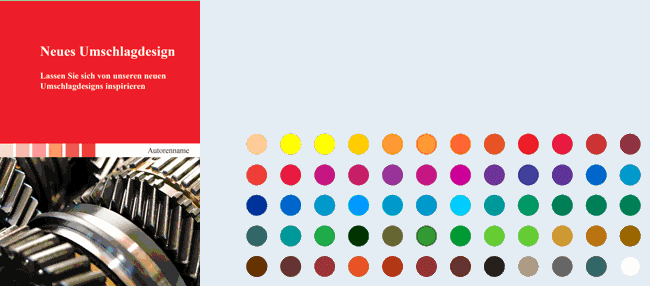
Layout II
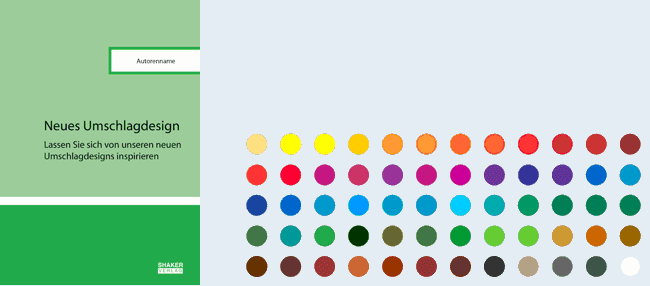
Layout III
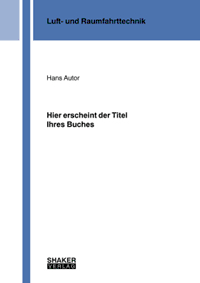
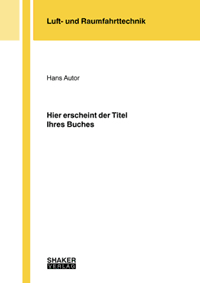
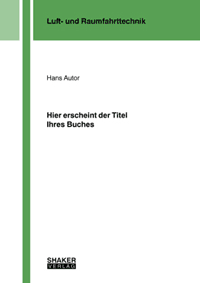
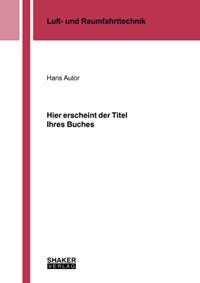
Layout IV




Layout V




Layout VI
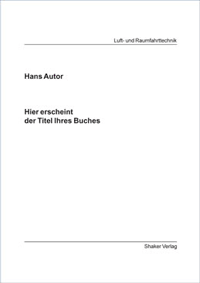


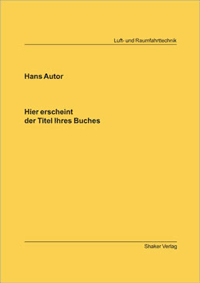

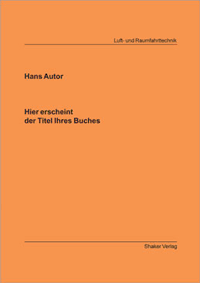
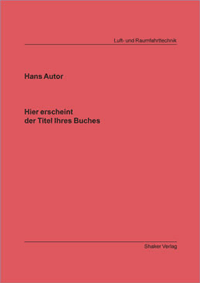
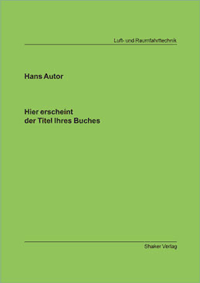
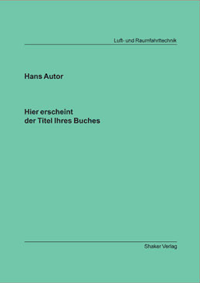

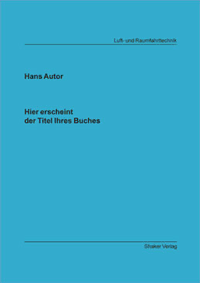

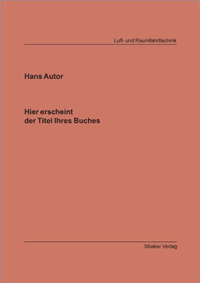

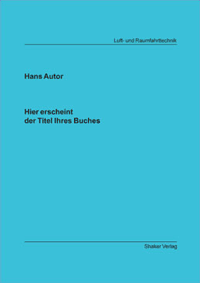
The standard features of our specialist publications include:
Individual cover design
You can submit your own cover design, which our graphics department will then prepare for printing, or you can commission us to design the cover.
Information on book cover layout design can be found in our Leaflet on layout design of book covers.
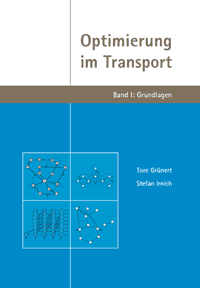


When initiating a series, we first conclude a framework agreement with the editors and publishing contracts with the respective author for each individual volume (Sample contract).
Key features of the publishing contract are:
- The author affirms that they hold all rights to the work and transfers the right of use to the publisher.
- The publisher waives the exclusive right of use; the author and institute may publish parts of it in journals, conference proceedings, etc. without the publisher's permission.
- The author undertakes to submit a complete and publishable manuscript.
- The publisher undertakes to reproduce and distribute the work.
- The author receives a fee for each copy sold and for ancillary rights exploitation (downloads, etc.).
After the publishing contract has been concluded, the ISBN is assigned, the publication is registered with the German Library, and the title is included in the Directory of Deliverable Books (VLB). Distribution can then begin in retail and online bookstores, libraries, research, business, and industry.
What is the VG Wort?
The Verwertungsgesellschaft Wort (VG WORT) was founded in 1958 as an association vested with legal capacity and holds the copyrights of authors and publishers in trust as a nonprofit organisation. The Verwertungsgesellschaft Wissenschaft has been organised as a separate department within the VG Wort since 1978.
What is the job of VG WORT?
As a result of the increasing technological advancement of our society, reproductions and other secondary uses of works are becoming increasingly easier and more frequent. They have become unmanageable for authors and publishers. VG WORT collects fees for many of these uses, which it distributes once a year according to a special distribution key. The scope and modalities of this work are constantly reviewed and adapted to changing circumstances.
Where does VG WORT’s income come from?
The main sources of income are:
- Library royalties
- Reading circle royalties for borrowing/renting works
- Copying machine royalties for the manufacture, import, and operation of copying machines (e.g., copy shops)
- Levies on IT hardware for creating digital copies for private copying and storage of copyrighted content (CD/DVD blanks, memory cards, and flash drives)
- Press review royalties for the reprinting of articles in press reviews
Who will participate in VG WORT’s distributions?
Owners of copyrights and usage rights to literary works or scientific or technical representations can transfer the administration of their rights to VG WORT and thus participate in its profit distribution. This is done by concluding a rights administration agreement.
The authorized representatives are divided into the following groups:
- Authors and translators of literary and dramatic literature
- Journalists, authors, and translators of non-fiction literature
- Authors and translators of scientific and technical literature
- Publishers of literary and non-fiction literature
- Theatrical publishers
Since 2018, the conclusion of a distribution agreement has also been mandatory in the Science Department. Only then can the title registration of scientific and non-fiction books and articles in books and journals be carried out by the authorized persons.
Please note that the distribution agreement must be concluded in the same year in which the publication takes place. The title itself can then be registered until January 31 of the following year.
What are the requirements for payment of royalties?
Remuneration for academic and non-fiction books is paid if the titles can be borrowed to a reasonable extent from academic libraries in Germany. The works must be listed in at least two regional library networks with at least five locations, donations are not considered. If the works are only listed in at least three locations or if at least 100 copies have been sold, a royalty of 50 % of the regular author's share can be paid.
How high are the VG WORT distributions?
In 2025, the remuneration for a scientific book published in 2024 was set at an average of € 1,300. The distribution will begin at the beginning of July.
Why are we informing you about the work of VG WORT?
As an author, you should take advantage of the opportunities available to exercise your rights as an author and benefit financially from the diverse uses of your work. For many authors, remuneration from VG WORT has now become an integral part of their income. When deciding to work with a publisher, you should therefore consider the following advantages of publishing:
- Cooperation and mutual complementarity of the work of author and publisher
- The opportunity to use the described work of VG WORT for you as the author and thus derive the greatest possible financial benefit from your work
How can I learn more about VG WORT?
VG WORT provides information about itself and its work on its website at www.vgwort.de.
Dates
Distribution
The Science Department's distribution takes place as part of VG WORT's main distribution at the end of June/beginning of July each year.
Registration Deadlines
The distribution agreement must be concluded by December 31 of the year of publication.
Books must always be registered with VG WORT by January 31 of the year following the year of publication.
You also have the option of registering your books up to three years after publication. For book and journal articles, the period is two years. The year of publication is included.
You can submit your publication and communicate easily and efficiently with the relevant editorial team via your personal account. If you would like to submit a non-binding publication request in advance, please use the input fields below.
For author copies, we will provide a customized quote based on our current, affordable terms. The costs are generally based on the total page count of the work, the features (format, paperback/hardcover, multi-colored cover), and the quantity purchased.
Please provide us with the key details of your publication. Please fill out this form so we can send you detailed information.
Standard contracts
We have provided some standard contracts as PDF files here for your information:
- Thesis
- Publication series
- Conference proceedings
- Reference book
- Lecture notes
- CD/DVD
- Online publication
- Open Access
Preparing a manuscript
Notes on preparing a manuscript: Download
Layout design
Notes for creating book covers: Download
Am Langen Graben 15a
52353 Düren
Germany
Fri. 8:00 a.m. to 3:00 p.m.

